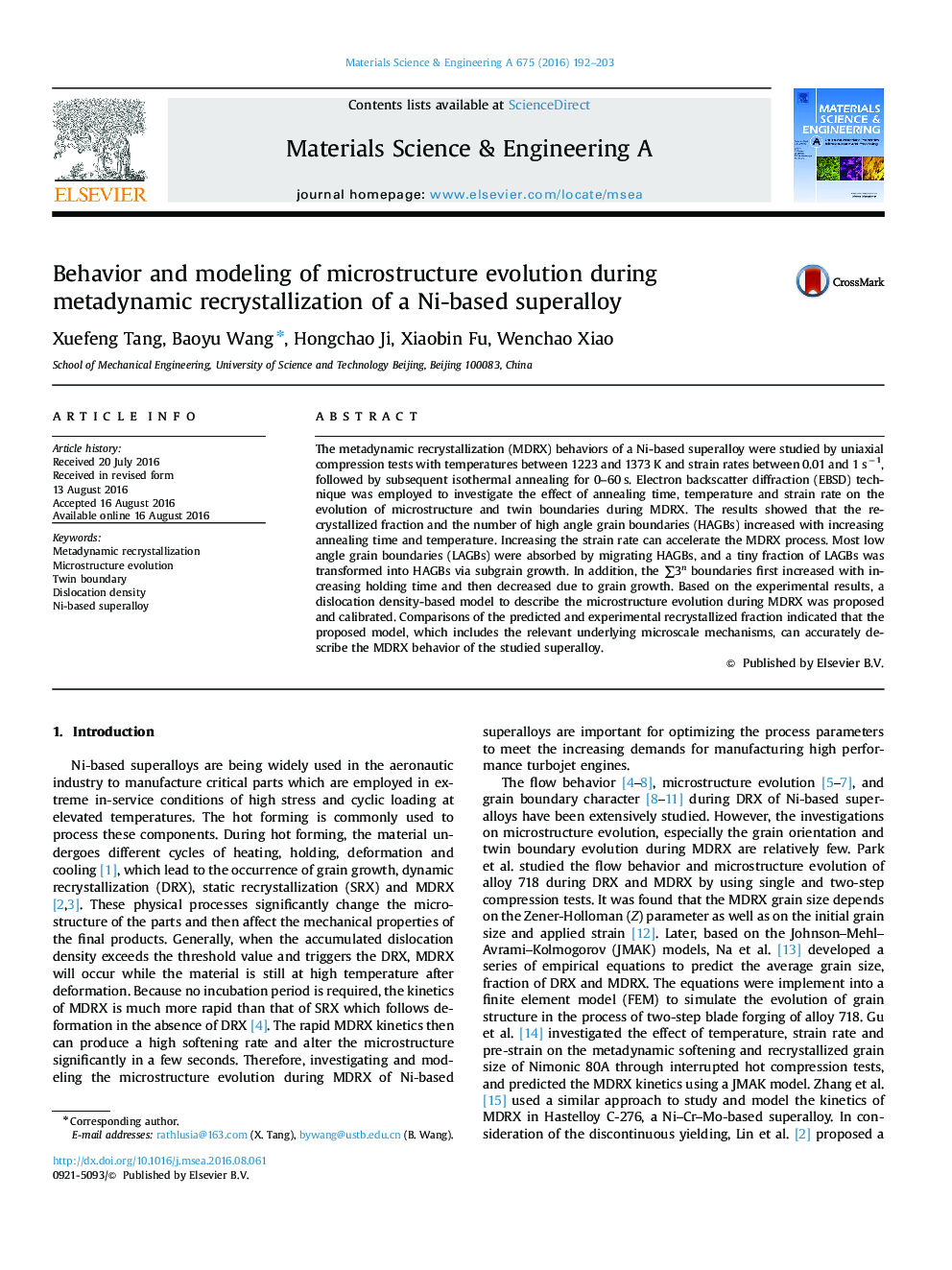| Article ID | Journal | Published Year | Pages | File Type |
|---|---|---|---|---|
| 1573028 | Materials Science and Engineering: A | 2016 | 12 Pages |
The metadynamic recrystallization (MDRX) behaviors of a Ni-based superalloy were studied by uniaxial compression tests with temperatures between 1223 and 1373 K and strain rates between 0.01 and 1 s−1, followed by subsequent isothermal annealing for 0–60 s. Electron backscatter diffraction (EBSD) technique was employed to investigate the effect of annealing time, temperature and strain rate on the evolution of microstructure and twin boundaries during MDRX. The results showed that the recrystallized fraction and the number of high angle grain boundaries (HAGBs) increased with increasing annealing time and temperature. Increasing the strain rate can accelerate the MDRX process. Most low angle grain boundaries (LAGBs) were absorbed by migrating HAGBs, and a tiny fraction of LAGBs was transformed into HAGBs via subgrain growth. In addition, the ∑3n boundaries first increased with increasing holding time and then decreased due to grain growth. Based on the experimental results, a dislocation density-based model to describe the microstructure evolution during MDRX was proposed and calibrated. Comparisons of the predicted and experimental recrystallized fraction indicated that the proposed model, which includes the relevant underlying microscale mechanisms, can accurately describe the MDRX behavior of the studied superalloy.
